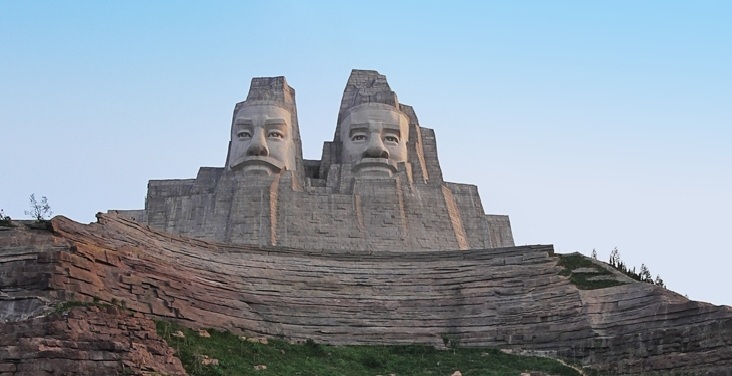The Monumental Sculpture of Emperors Yan and Huang: A Symbol of Unity and Heritage
The sculpture of Emperors Yan and Huang stands as a monumental tribute to two of China’s mythical emperors, Yan Di and Huang Di. Carved directly into a mountain along the Yellow River, this impressive structure not only commemorates the rich history and culture of China but also showcases the country’s ability to undertake and complete grand architectural projects. Completed in 2007, after two decades of laborious construction, the sculpture has become a significant landmark in Zhengzhou, Henan province, reflecting both the political and economic aspirations of the People’s Republic of China.
Get your dose of History via Email
Historical Background
The idea for the sculpture was conceived by Wang Renmin, a prominent figure associated with a tourist attraction in Zhengzhou City. Inspired by his visits to Singapore and the United States in 1987, where he observed a strong sense of identity among the descendants of the Yan and Huang Emperors, Wang proposed the creation of a sculpture by the Yellow River to honor these legendary figures. On October 15, 1987, he announced plans for the sculpture and initiated a global donation campaign to fund the project. Over the next five years, Wang dedicated himself to lobbying for support, leading to the formation of the Yanhuang Emperor Giant Sculpture Preparatory Committee in Beijing in 1988 and the establishment of the national Chinese Yanhuang Culture Research Association on May 10, 1991. Construction officially began in September 1994 but was initially hampered by funding issues. In 2004, the project was taken over by the Zhengzhou Municipal Government, which provided the necessary support to see the construction through to its completion on April 18, 2007.
Construction Details
The sculpture, with an overall height of 106 meters, is a remarkable feat of engineering and artistry. It features the busts of Emperors Yan and Huang, each with a height of 51 meters, placed atop a 55-meter base platform. The faces of the emperors, which cover more than 1,000 square meters, have been crafted with striking detail: their eyes span 3 meters in length, and their noses extend for 8 meters. This grand scale ensures that the sculpture not only dominates the landscape but also serves as a powerful symbol of unity and continuity.
Constructed using over 7,000 cubic meters of concrete, 1,500 tons of steel, and 6,000 cubic meters of granite sourced from Taihang Mountain, the sculpture surpasses the height of the Statue of Liberty by 8 meters and the Motherland Calls in Russia by 2 meters. The project, which cost approximately 180 million yuan (US$22.5 million), represents a significant investment in both financial and cultural terms.
Conclusion
The sculpture of Emperors Yan and Huang is more than just a monumental work of art; it is a testament to the enduring legacy of China’s mythical emperors and their significance in the collective memory and identity of the Chinese people. By integrating the natural landscape with human creativity, the sculpture stands as a symbol of unity, bridging the past with the present and future. Its completion in 2007 marked not only the culmination of two decades of dedicated effort but also the beginning of a new chapter in the appreciation and understanding of China’s rich cultural heritage.
Sources:
Wikipedia

